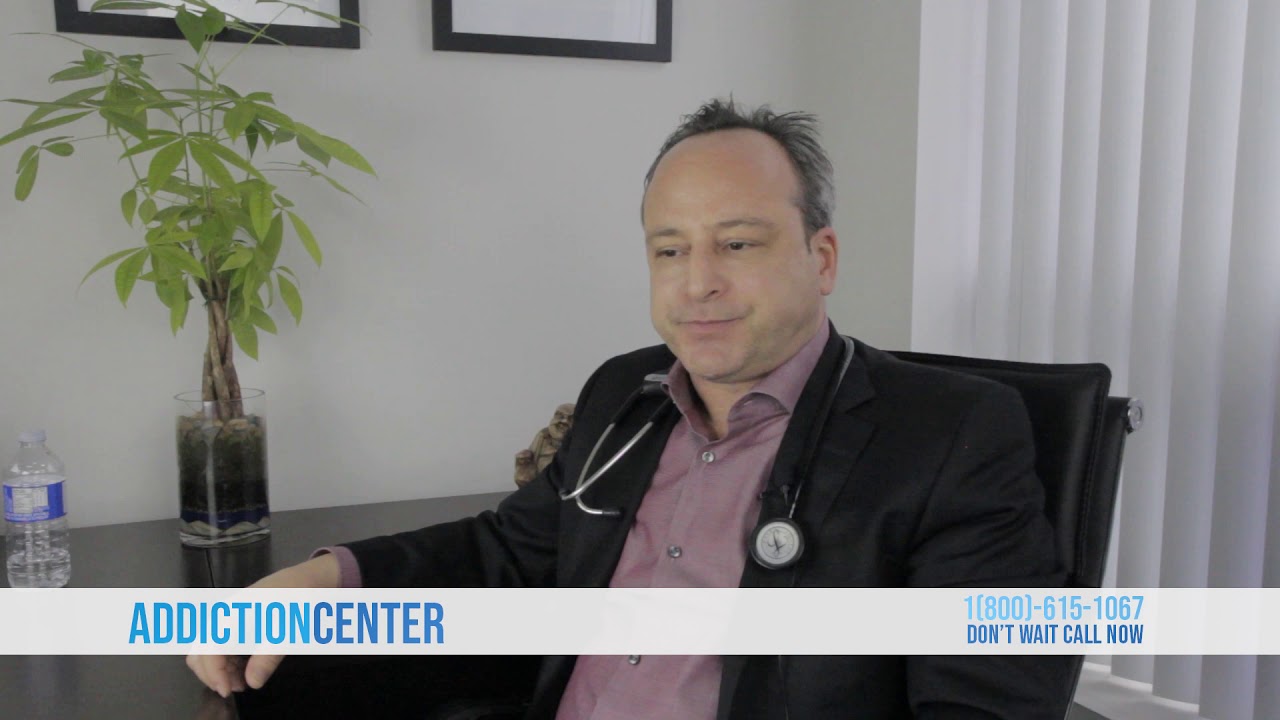Struggling with the decision between inpatient and outpatient treatment for your child’s addiction? You’re not alone. This pivotal choice can shape the path to recovery and well-being, so it’s critical to grasp the nuances. At www.MothersAgainstAddiction.org, we understand the challenges parents face when supporting a child through addiction. We hope this article will shed light on the key differences between inpatient and outpatient treatment.
Understanding Inpatient vs. Outpatient Treatment
The terms ‘inpatient’ and ‘outpatient’ may seem straightforward, but their implications are far-reaching. Inpatient treatment, often called residential treatment, involves staying in a treatment facility like the Betty Ford Center for a specified period. It offers a highly structured environment 24/7. On the other hand, outpatient treatment allows individuals to reside at home while attending scheduled sessions at a facility, such as those provided at Hazelden Betty Ford Outpatient locations. This approach is generally more flexible in terms of commitments and allows patients to continue their daily lives.
Treatment Environment and Structure
Inpatient Treatment
Comprehensive Care: Facilities such as the Betty Ford Center offer round-the-clock medical and emotional support, ensuring continuous professional care.
Isolation from Triggers: A controlled environment helps patients stay away from external temptations, reducing the risk of relapse and fostering a focus on recovery.
Highly Regulated Schedule: A structured daily routine, including therapy sessions, educational workshops, and physical activities, helps keep patients focused on their recovery goals.
Outpatient Treatment
Flexible Scheduling: Programs, like those at Hazelden Betty Ford, allow patients to juggle treatment with daily responsibilities like work or school.
Less Isolation: By staying connected to their support network, patients can practice coping mechanisms in real-time settings, which can be invaluable for long-term recovery.
Cost-Effective: Generally, outpatient programs are more financially accessible, providing an affordable option for those with budget constraints.
| Aspect | Inpatient Treatment | Outpatient Treatment |
|---|---|---|
| Definition | Involves overnight stay in a healthcare facility. | Services provided without an overnight stay. |
| Duration | Stays typically extend beyond 24 hours. | Duration is 24 hours or less. |
| Common Settings | Hospitals, specialized treatment facilities. | Hospitals, outpatient centers, private clinics. |
| Treatment Components | Comprehensive 24/7 medical and emotional care. | One-on-one therapy, group therapy, educational classes. |
| Eligibility | Severe addiction, dual diagnoses, need for intensive care. | Mild to moderate addiction, stable home environment. |
| Intensity of Care | High; constant supervision, structured environment. | Moderate; flexible schedule, patient returns home daily. |
| Accessibility | Limited by availability of beds, higher costs. | More accessible, generally lower cost. |
| Cost | Higher due to 24/7 care and facility use. | Lower due to reduced facility use and shorter duration. |
| Benefits | – Round-the-clock care. | – Flexible scheduling. |
| – Immediate access to medical and psychological support. | – Ability to maintain daily routines. | |
| – Structured environment, reducing relapse triggers. | – Cost-effective for less severe cases. | |
| Disadvantages | – Disruptive to daily life, work, or school commitments. | – Less intensive monitoring, potential for easier relapse. |
| – Higher financial burden. | – Must rely on personal discipline outside therapies. | |
| Common Services Provided | Detoxification, medication-assisted treatment (MAT). | Therapy sessions (individual & group), education classes. |
| Follow-up Care | Often includes outpatient care post-discharge. | May require frequent check-ins, continued therapy. |
| Patient Autonomy | Reduced autonomy due to strict regimen and confinement. | Higher autonomy with outpatient flexibility. |
Level of Intensity in Treatment
Inpatient Treatment
High-Intensity Care: Suitable for those with severe addiction issues, inpatient programs offer immediate, intensive interventions, frequently involving detoxification and Medication-assisted Treatment ( Mat ).
24/7 Monitoring: Continuous supervision ensures any complications or relapses are addressed promptly, making it a safer option for those needing critical care.
Outpatient Treatment
Variable Intensity: Programs can range from partial hospitalization to standard outpatient services, as seen at Phoenix House, making it adaptable for various severities of addiction.
Gradual Progress: Outpatients gradually reduce their treatment sessions as they improve, allowing a flexible approach throughout their recovery journey.
Social Support and Family Involvement
Inpatient Treatment
Family Programs: Centres like Caron Treatment Centers offer family counseling sessions and visiting hours, ensuring family involvement in the treatment process.
Peer Support: Living alongside others undergoing similar struggles can foster camaraderie and provide a robust support network.
Outpatient Treatment
Daily Family Interaction: Remaining at home allows patients to maintain regular family interactions, which can significantly strengthen bonds and support recovery.
Community Resources: Local resources, such as support groups and workshops, reinforce the support network within the patient’s home community.
Duration and Commitment
Inpatient Treatment
Fixed Duration: Programs like those at Hazelden Betty Ford typically last from 28 days to several months, requiring a significant, albeit temporary, commitment.
Short-Term High Commitment: The immersive nature of inpatient treatment often leads to substantial immediate improvements in addiction symptoms.
Outpatient Treatment
Extended Duration: Programs often extend over several months to a year, integrating long-term support into the patient’s lifestyle for sustained recovery.
Low Commitment per Session: With treatment spread across several sessions a week, patients can balance recovery efforts alongside daily life demands.
Accessibility and Suitability
Inpatient Treatment
Higher Accessibility Barriers: Relocating to a treatment facility can present logistical challenges, particularly for those with existing family or work responsibilities.
Ideal for Severe Cases: Inpatient programs are perfect for severe addiction cases needing an intensive, supportive environment to kickstart recovery.
Outpatient Treatment
Wide Accessibility: Outpatient programs are inherently more accessible, allowing participation without significant lifestyle disruptions.
Suited for Mild to Moderate Cases: Outpatient services are often recommended for individuals with less severe addiction issues, providing adequate care without continuous supervision.
Cost Considerations
Inpatient Treatment
Higher Costs: Due to extensive resources, 24/7 care, and accommodation provided, facilities like Passages Malibu require a substantial investment.
Insurance Coverage: Many programs are partially covered by insurance plans, which can help reduce out-of-pocket expenses.
Outpatient Treatment
Lower Costs: Being more affordable, outpatient programs offer a practical option for those with limited financial means.
Insurance Accessibility: Outpatient services are frequently covered by insurance, easing the financial burden of treatment.
Success Rates and Long-Term Outcomes
Inpatient Treatment
Higher Immediate Success Rates: The controlled environment typically results in higher immediate success rates, with many experiencing breakthroughs during their stay.
Intensive Aftercare: Most programs include aftercare plans, such as transitional living arrangements or continued counseling, supporting ongoing recovery after discharge.
Outpatient Treatment
Strong Long-Term Support: The integrative and gradual approach can contribute to sustained recovery by enabling patients to build and test coping mechanisms in real-world scenarios.
Ongoing Support Network: Continuous access to support through regular meetings, therapy sessions, and peer groups helps maintain long-term sobriety and prevent relapse.
Embracing the Right Treatment Path
Choosing between inpatient and outpatient treatment is a crucial decision in the addiction recovery journey. Each option offers distinct benefits, and the right choice largely depends on the addiction severity, personal circumstances, and required support levels. Consulting with healthcare professionals can help determine the best-fit treatment approach, ensuring lasting sobriety and well-being. Whatever path you choose, remember that www.MothersAgainstAddiction.org is here to support you and your family every step of the way.
By understanding these key differences, parents can make informed choices that are in the best interest of their child’s recovery journey. For more insights into holistic addiction treatment and peer support in recovery, visit our website.
Find home building Companies near me and Figure Heloc options if you’re looking into home renovations to better support your loved one’s recovery. For lighter moments, enjoy a magical escape with Calcifer.
With love and resilience,
The Team at Mothers Against Addiction
Inpatient vs. Outpatient Treatment: Key Differences
When navigating through the options for addiction treatment, understanding the distinction between inpatient and outpatient treatment is crucial. These two approaches offer unique pathways to recovery. Let’s dive into the key differences, fun trivia, and some interesting tidbits that might surprise you.
Structure and Environment
Inpatient treatment involves residing at a facility for an extended period – ranging anywhere from 28 days to 6 months or more. It’s like taking a deep dive into recovery, where patients receive 24/7 supervision and support. Interestingly, did you know that the popular film “28 Days,” starring Sandra Bullock, was inspired by someone close to the director who experienced inpatient therapy? On the other hand, outpatient treatment offers the flexibility to live at home while attending scheduled sessions. This approach is ideal for those who can manage their daily lives while receiving treatment. Whether you are investing time in inpatient treatment or checking out outpatient alternatives, managing certified funds becomes crucial to cover the costs effectively.
Care and Supervision
Let’s talk about care. In inpatient treatment, patients receive round-the-clock medical supervision, which can be indispensable during the detox phase. This environment eases the transition and mitigates the risk of relapse. On the flip side, outpatient programs provide a similar level of care but on a less intensive scale, often catering to individuals who have a strong support system at home. Think of it as choosing between a fully serviced health retreat and a supportive, yet independent, healing journey. For instance, some renowned doctors, like Keno MD, have revolutionized outpatient care by integrating innovative methodologies that promote sustained recovery.
Cost and Accessibility
The cost varies significantly between inpatient and outpatient treatments. Inpatient care can be more expensive due to the comprehensive services provided, including accommodation and meals. Trivia alert: Did you know that the average cost for a 28-day inpatient treatment program in the U.S. can exceed $20,000? Outpatient treatment, though generally more cost-effective, requires diligent time management and personal commitment. Some programs even offer sliding scale fees based on income, making treatment more accessible to a wider audience.
Through this exploration, it’s clear that both inpatient and outpatient treatments play pivotal roles in the journey to recovery. By understanding the key contrasts and intriguing facts, families can make informed decisions that best suit their situations, aiding their loved ones as they navigate the path of healing.

What is the difference between inpatient and outpatient?
Inpatient care means staying in a hospital overnight or longer to receive treatment, while outpatient care involves visiting the hospital for treatment and going home the same day.
What is the difference between an inpatient and an outpatient appointment?
An inpatient appointment means you’re admitted to the hospital and usually stay overnight. An outpatient appointment means you go to the hospital, get your treatment, and leave without staying overnight.
What is the meaning of inpatient therapy?
Inpatient therapy involves staying in a hospital or a specialized facility where you receive intensive medical or psychological treatment for a specific condition.
How to determine inpatient vs outpatient claims?
To determine inpatient vs outpatient claims, look at whether the treatment required an overnight stay in the hospital. Inpatient claims usually involve room and board charges, while outpatient claims won’t.
What is an example of an outpatient procedure?
An example of an outpatient procedure is a minor surgery, such as the removal of a mole, where you go home the same day after the procedure.
What is outpatient or inpatient procedure?
Outpatient or inpatient procedure refers to whether you’re treated and sent home the same day (outpatient) or if you stay in the hospital for one or more nights (inpatient).
Is a day case an inpatient?
A day case is not considered inpatient. It’s a type of outpatient care where you’re treated and sent home within the same day.
Why is outpatient care important?
Outpatient care is important because it provides flexibility, allowing patients to receive the necessary care without disrupting their daily lives too much.
Do doctors call you if test results are bad?
Yes, doctors usually call you if test results are bad to discuss the findings and next steps. They want to make sure you get the appropriate follow-up care quickly.
What are the three classifications of outpatient treatment?
The three classifications of outpatient treatment are general outpatient care, intensive outpatient programs (IOPs), and highly intensive outpatient programs (HIOPs).
Why is it called inpatient?
It’s called inpatient because the patient is ‘in’ the hospital, staying overnight to receive treatment.
What is an inpatient mental health care?
Inpatient mental health care involves staying in a specialized hospital or facility for intensive treatment of mental health conditions, with 24-hour supervision and care.
What are examples of inpatient vs outpatient?
Examples of inpatient vs outpatient include inpatient heart surgery where you stay in the hospital, versus outpatient physical therapy where you visit the hospital but go home the same day.
How to tell if a CPT is inpatient or outpatient?
To tell if a CPT is inpatient or outpatient, check the billing codes and records; inpatient will include room and board charges while outpatient won’t.
What is the difference between working in an inpatient vs outpatient setting?
Working in an inpatient setting usually involves more intensive, round-the-clock care with longer patient interactions, while outpatient involves shorter appointments and less intensive treatment.
What is an example of an inpatient setting?
An example of an inpatient setting is a hospital ward where patients stay overnight to receive care.
What does inpatient admission mean?
Inpatient admission means being formally admitted to the hospital with the expectation that you’ll stay at least overnight to receive treatment.
What is considered the ultimate goal of inpatient care?
The ultimate goal of inpatient care is to stabilize and treat the patient’s condition so they can safely transition to outpatient care or return home.
What are the most common reasons clients are being admitted to the hospital?
Common reasons clients are admitted to the hospital include severe infections, surgeries, complications from chronic illnesses, or mental health crises that require intensive care.




























